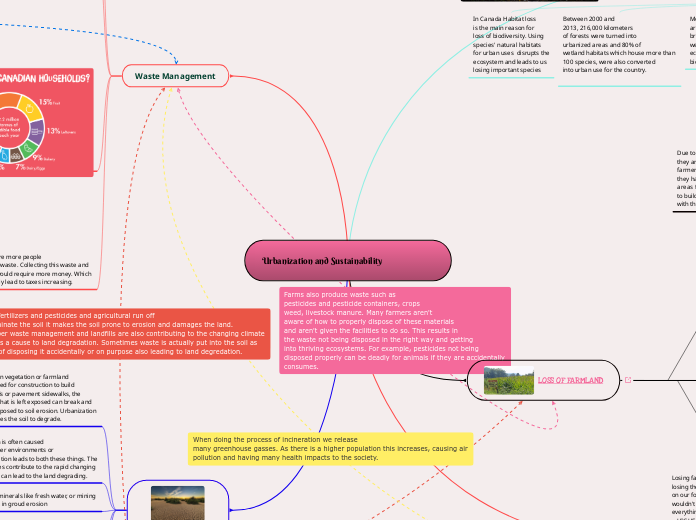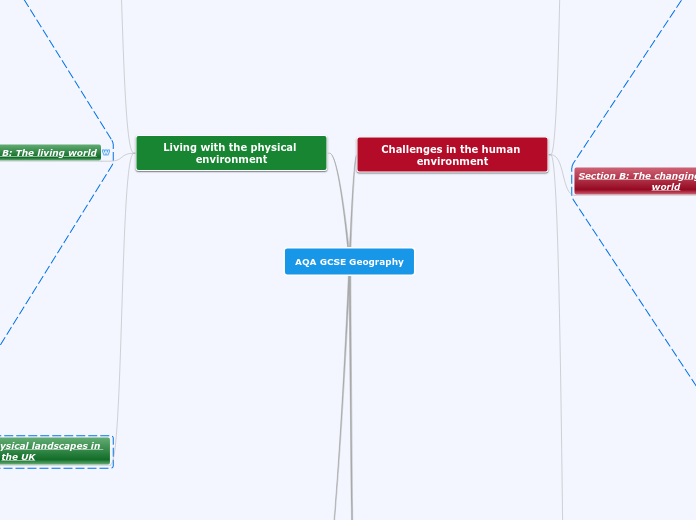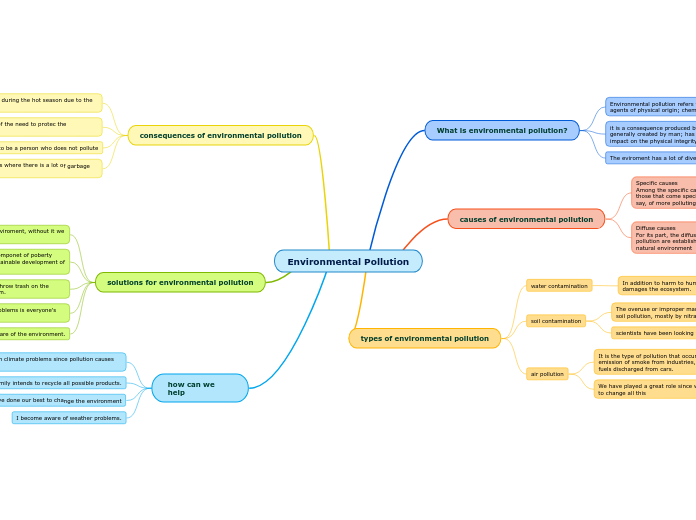Use less polluting cleaning substances,
don't smoke in the rooms, cover ceiling tiles and AC ducts to not release harmful stuff into the air
Building more safe and affordable
transportation systems
Improving the waste management and sustainable waste managements to avoid releasing toxins into the air.
Solution 2: Make more compact cities
smarter cities, instead of individual housing units building condos and apartments so there isn't a need to individual energy usage.
Solution 1: Investing in Sustainable energy sources such as windmills, to not release greenhouse gasses from burning fossil fuels.
Solution 1: Organic Farming
when farming it is important
not to use fertilizers or do excessive
farming in one area. Planning out where to
plant each crop
Not building on compromised land
Monitoring grazing to make sure the animals
aren't over grazing and digging into the soil.
Solution 3: Control on Mining. Mining
is one of the leading causes to land degradation. Mining companies should be monitoring and closely looking at the land they are mining to make sure they save it and also for their own safety.
Solution 2: Planting trees in areas which have no tree cover. Trees help keep soil down and intact into the ground. Areas with no cover are more likely to erode.
Industrial waste and poor sewage
is so harmful for water species and
species living near wetlands or water
bodies. Once the waste is in these streams
they harm the species so much. Many people don't correctly dispose of things like oil, by putting it into the sink it is getting direct access into the water bodies.
Animals get into Landfills
often mistaking them for food
or getting trapped in the waste.
Harming themselves.
The toxic gasses that are released into
the air when transporting the garbage on ships is incredibly harmful for the species as well.
As the population
increases it means
there are more people; people
who litter. This litter gets to the animals
and harms their proper ability to thrive
Solutions to Waste
Management
Buying in Bulk, Buying reusable items, Buying second hand or donated items. Buying local foods as they are not shipped
or transported.
Solution 3: Solving the Root of the Problem.
The best solution to poor waste management having less waste in the first place. If we invest in biodegradable packaging for items and just stop the manufacturing of items that have a lot of packaging and create a lot of waste we could help solve the root of this problem .
Solution 2: Composting
composting waste would mean
letting food and biodegradable waste
degrade on it's own and turn into
somethinghelpful for us such as fertilizer.
Solution 1: Finding ways to use the waste
to create energy or something useful for us. We are already incinerating our garbage which is harmful so one way we could just adapt to this is by turning that incinerated waste into energy.
Anaerobic Digestion which is basically
organisms breaking down waste and
turning it into energy
Waste to Energy Incineration
Sollution 4:
Not planting invasive species
in our gardens or farms.
They can cause the loss of
biodiversity because they may
disrupt the natural ecoystem/
food chain and lead to extinction
of these threatened species we
want to protect.
Solution 1: Growing native
plants in gardens or other
places which can help restore
habitat for native species. Act as
a buffer between them kind-of a
"fake ecosystem" that can help the
lost habitats. Organizations like the WWF
have many programs that people may
involve themselves in to help.
Solution 2: The Government
needs to put in place laws
and regulations when it comes to
urbanizing natural areas to protect
the wildlife because once there is
action being taken on that level, The data
is all there, yet action still isn't being
taken by the government to help, if laws
to protect were put in place we'd help the
most.
Sollution 3: Building cities
sustainably and in a way that
protects the natural resources we have.
Cities should be planned while thinking
about things like biodiversity loss.
Providing funding for cities to
participate in initiatives such as
tree-planting initiatives to maybe
restore the habitat lost .
Farms act as a buffer
between urban and natural
areas. As urbanization increases
some animals struggle to find a natural
habitat. Farms can act as one for species like the BOBOLINK AND MEADOWLARK. When farms are destroyed species like these are at a high risk of being extinct. Loss
of farmland = loss of thriving ecosystems
Meadowlark
Bobolink
Urbanization and Sustainability
Land Degradation
Land degradation would result in a reduced food supply,
lost supply of water and people may have to move into
other areas as well which would just result in more need for
the building of residential centers.
When land degrades the value of the land becomes cheaper
which builders want to buy. But this land is not actually safe
or ideal for building
Extracting resources and minerals like fresh water, or mining
for things which can result in groud erosion
Land Degradation is often caused
by extreme weather environments or
drought. Urbanization leads to both these things. The
greenhouse gasses contribute to the rapid changing
of the climate and can lead to the land degrading.
When vegetation or farmland
is used for construction to build
roads or pavement sidewalks, the
soil that is left exposed can break and
is exposed to soil erosion. Urbanization
causes the soil to degrade.
When the quality of soil
degrades due to the construction
or releasing of chemicals into the soil
it is now bad for the use of farming and
different species
Waste Management
When there are more people
there is more waste. Collecting this waste and
managing it would require more money. Which
would probably lead to taxes increasing.
People who are already struggling to pay
taxes may be affected worse now
Canada doesn't have a great waste management
system of its own. Most of our garbage is actually
put into landfills, incinerated or sent out on ships.
The ships we use to ship out our garbage
also release many toxic emissions.
When we incinerate waste
it is rare that we are incinerating
materials that we can dispose of
normally; they are going to be
toxic materials which release green
house gasses and emissions into the air .
People who may be living around
these areas have said to have many
diseases just from breathing in this
air.
30% of our waste is recycled or
composted and the remaining is
incinerated or sent to landfills.
Landfills are built away
from residential areas in
open spaces...But are they
really? Many Landfills
are actually built near Indigenous
communities in Canada.
The waste in Indigenous
communities is also not often prioritized
or managed. Let's say
they are built away from homes here
in Canada, but when we send our
garbage to other countries, their landfills
aren't built away from homes. In fact many
people live around those landfills and work in them
sorting out garbage.
Lots of Indigenous community
water is also affected due to poor
sewer management and waste management
Food Waste: When Food is wasted
it needs to be replaced. In Urban Areas
people are rarely eating local foods
or foods which are produced sustainably.
To replace the food that is wasted it harms the
environment. For example, if you throw out
chicken; for that chicken to be replaced it means
more chickens in the slaughter.
Supply Vs Demand in Urbanization
doesn't just apply to housing it can
also apply to things like food. When
we waste more than we eat, it gets hard
to replace.
As the population grows that means
there are more people to produce waste
On average, Canada produces 720kg of waste per capita
People in urban areas rely heavily
on packaged meals; packaged items
which produce a lot of waste. Each
household produces a ton of waste
but we don't have a system to put it.
Air pollution
Wildfires. We've had wildfires in Canada
when they happened you could notice the negative
impact it was having. There was smog, the air was
unbreathable
Household air pollution such as spraying toxic
cleaning chemicals, smoking inside a room.
With more human household
we require more energy for each home. To produce this energy we need to burn greenhouse gasses in order for the rising population to have energy; but in the process of doing so we release a lot of toxics into the air.
Air pollution is incredibly harmful for the health
of humans and wildlife as well. When harmful toxins
enter our body they tend to create problems for us.
With Urban sprawl less people end up using
public transits or transportation options that
produce less emissions and they end up relying on
their own cars.
Urbanization causes air pollution
through the emissions of greenhouse
gases and toxic emissions. Through
construction and industrial buildings
LOSS OF FARMLAND
Urbanization is responsible
for the loss of 65% of the farmland
in Ontario, Quebec and the Maritimes. Since
1920.
At the rate we are losing farm
land currently we can only use
3.2% to farm and 4.2% for pastureland
in all of canada.
For every 1 million people
added to Canada's population
we lose 530 square km of farms
Once farmland is turned around to use
for any other use it cannot be turned back
into farmland. Once it has been built on and
exposed to the harmful materials it isn't safe
for farming anymore.
Losing farmland would also mean
losing the prices we currently have
on our foods. Locally grown produce
wouldn't exist anymore meaning
everything would be imported. IMPORTED
= HIGHER PRICE
Solution 1: Instead of
expanding the cities and
building houses on the farmland
use the space we already have;
for example office space, Building up not out. If it is too
expensive for builders, maybe the government
should be providing funding so that we can solve
the housing crisis and save farmland
Solution 3: BUY LOCALLY!
Some of Ontario's farmland
is actually protected by the government
so it cannot be built on. This is because they bring
ECONOMIC BENEFIT. Buying locally would give
farmers the income and support they need which could
mean farms not being sold. If we support farmers they
wouldn't even need to sell their farms because they would
get the income they need.
Solution 2: Working with
policies or support farmers can get
like the Ontario Farmers Trust or RAMP. Which encourage
the governments to work along with the farmers and help
with the smart development of the cities.
Some species actually rely on farmland to thrive
for example the Bobolink and Eastern Meadowlark
which are considered to be threatened species (provincially)
to nest and forage.
In Ontario as of 2021 we have been losing around
319 acres of farmland per day which means 1 average family
farm being sold daily.
Due to Urbanization we are losing farmland because
they are being used to build houses and farming isn't bringing farmers the satisfaction and income it once used to bring so they have been selling their farms and moving into urbanized areas for better opportunity. Builders are taking the farmland to build houses because it is cheaper for them and easy to stay with the growing housing demand.
Loss Of Biodiversity
As more people chose to
live in urban areas, they
need more resources.
Many times this means
extracting natural resources
for the use of humans. Such as fresh
water or wood. Which could've been
important for another species to thrive.
Urbanization leads to
many toxins and pollutants
which are harmful for our
biodiversity being released.
More Urban areas
mean more Industrial areas
as well such as factories or
manufacturing hubs. When
these buildings are built near
animal habitats, they cause the loss of
those species
Industrial waste,
Air/water pollutants
Agricultural run-off
Sewage
Most materials used by builders
are brought in internationally, when
bringing in materials from other countries
we can introduce invasive species into our
ecosystems, further leading to the loss of
biodiversity.
Between 2000 and
2013, 216,000 kilometers
of forests were turned into
urbanized areas and 80% of
wetland habitats which house more than
100 species, were also converted
into urban use for the country.
In Canada Habitat loss
is the main reason for
loss of biodiversity. Using
species' natural habitats
for urban uses disrupts the
ecosystem and leads to us
losing important species









